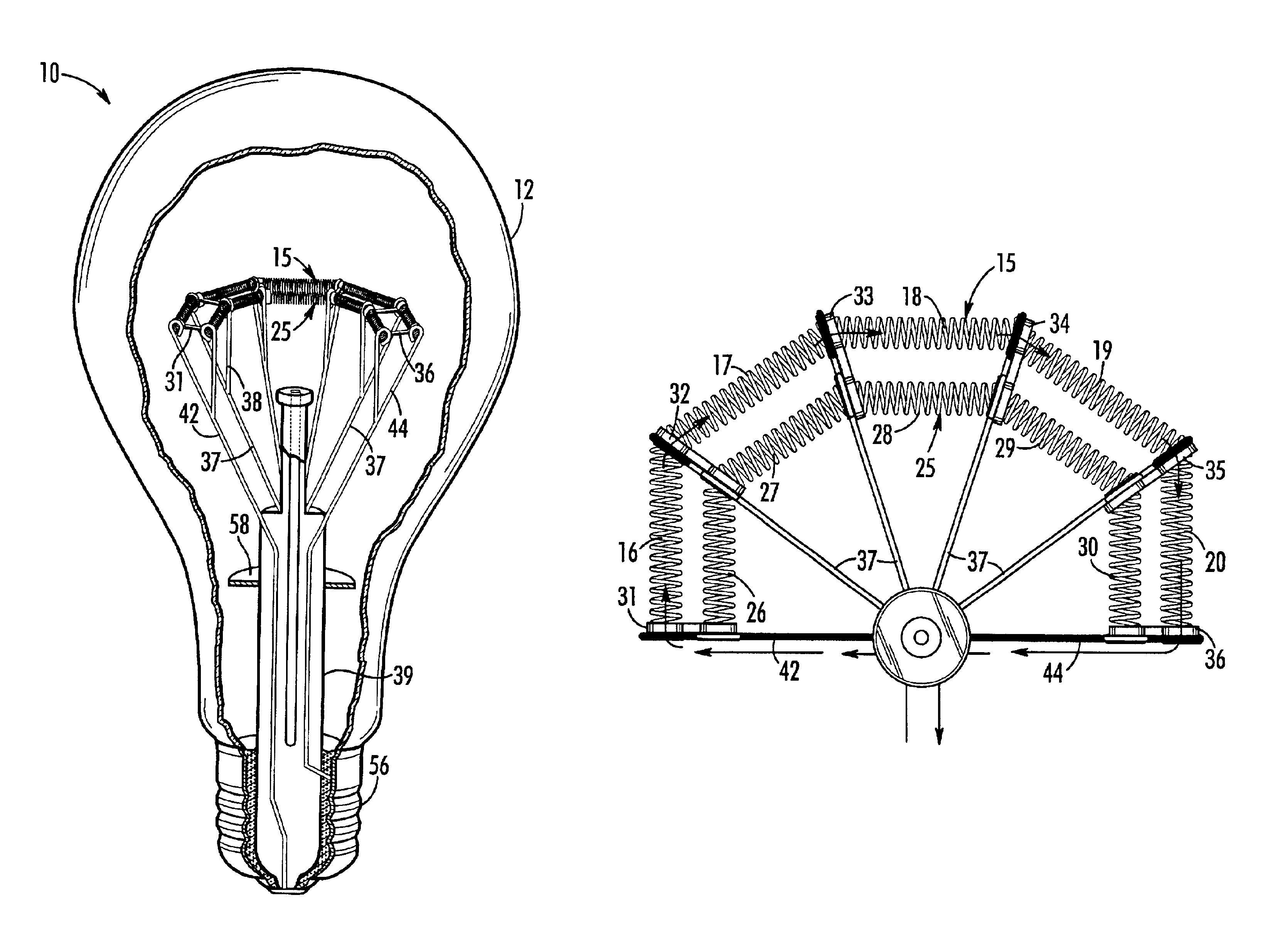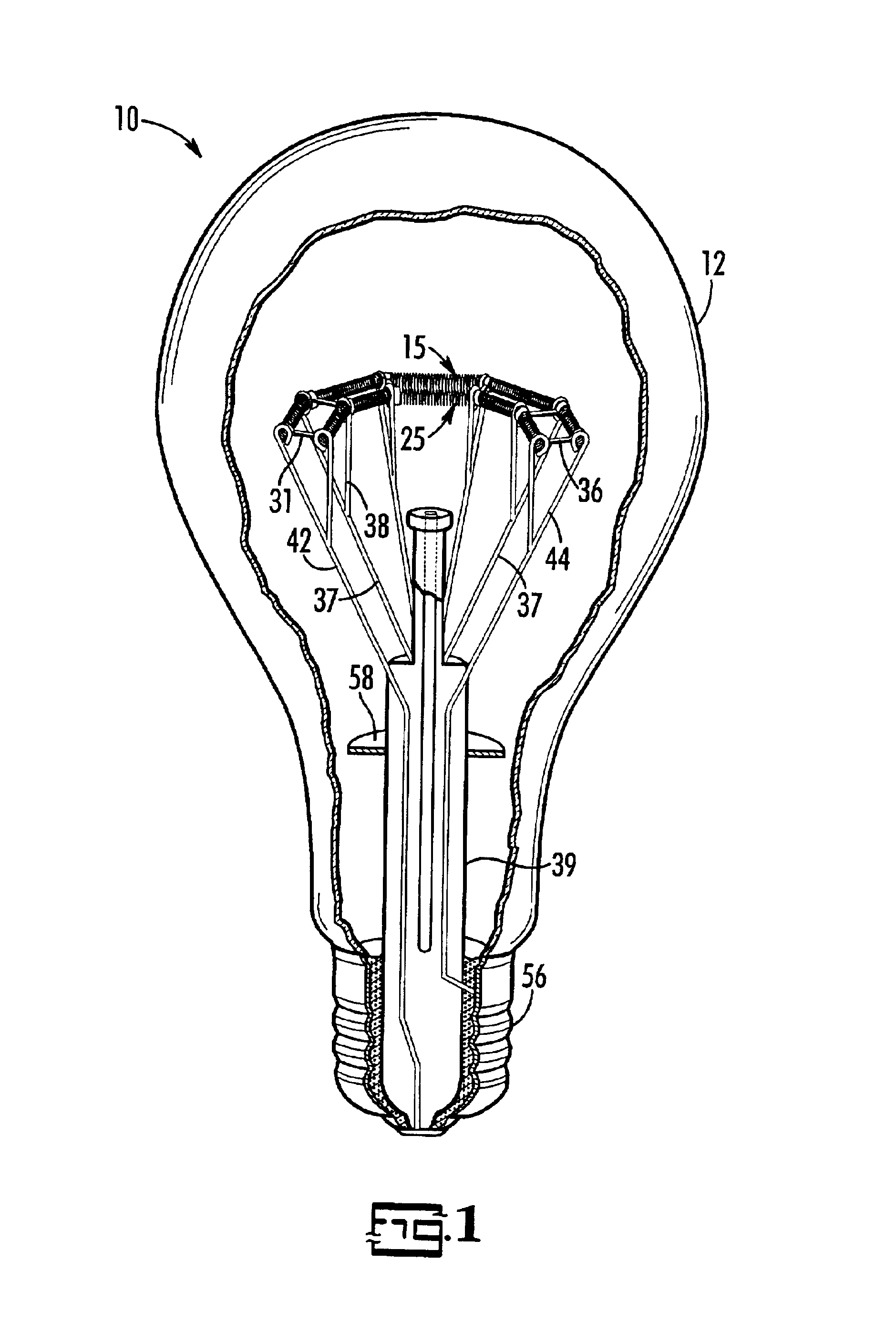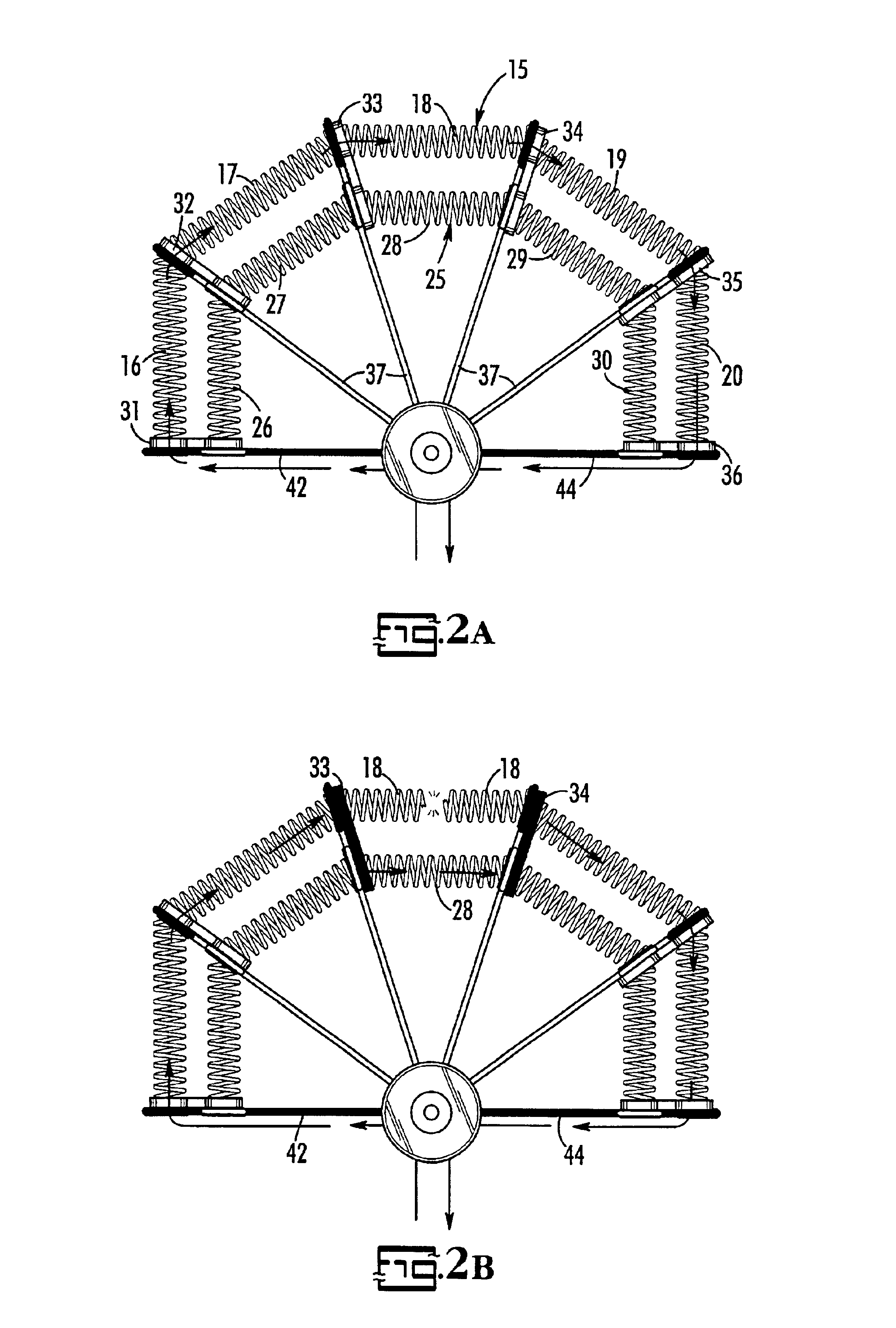Multiple, parallel filament lamp
a filament lamp and parallel technology, applied in the field of lamps, can solve the problems of tungsten molecules evaporating off of the filament and condense onto the glass bulb, further evaporation, and filament portion becoming hotter, etc., to prolong the usable increase the life of the lamp, and high visible light emission efficiency
- Summary
- Abstract
- Description
- Claims
- Application Information
AI Technical Summary
Benefits of technology
Problems solved by technology
Method used
Image
Examples
Embodiment Construction
accompanied by the following drawings.
BRIEF DESCRIPTION OF THE SEVERAL VIEWS OF THE DRAWINGS
FIG. 1 is a perspective cut away view of the present invention lamp.
FIG. 2A is a plan view of a dual filament group embodiment of the present invention showing the current flow path during normal operation of all primary-group filaments, according to a preferred embodiment of the present invention.
FIG. 2B is a plan view of the dual filament group embodiment shown in FIG. 2A showing an example of the current flow path during normal operation of a backup filament segment bypassing an open circuited primary filament segment.
FIG. 3 is a perspective cut away view of another preferred embodiment of the present invention lamp.
DETAILED DESCRIPTION OF THE INVENTION
The present invention is an improvement to electric lamps that is primarily directed, but not limited, to extending an incandescent lamp's lifetime. In particular, the improvement includes the use of backup filaments (or filament segments) t...
PUM
 Login to View More
Login to View More Abstract
Description
Claims
Application Information
 Login to View More
Login to View More - R&D
- Intellectual Property
- Life Sciences
- Materials
- Tech Scout
- Unparalleled Data Quality
- Higher Quality Content
- 60% Fewer Hallucinations
Browse by: Latest US Patents, China's latest patents, Technical Efficacy Thesaurus, Application Domain, Technology Topic, Popular Technical Reports.
© 2025 PatSnap. All rights reserved.Legal|Privacy policy|Modern Slavery Act Transparency Statement|Sitemap|About US| Contact US: help@patsnap.com



